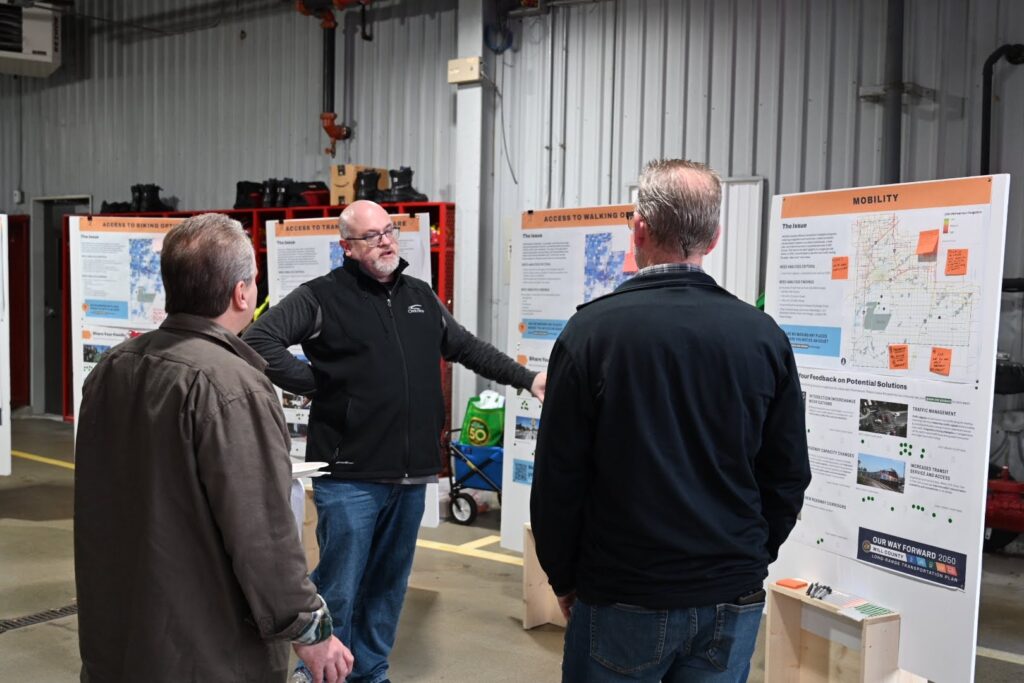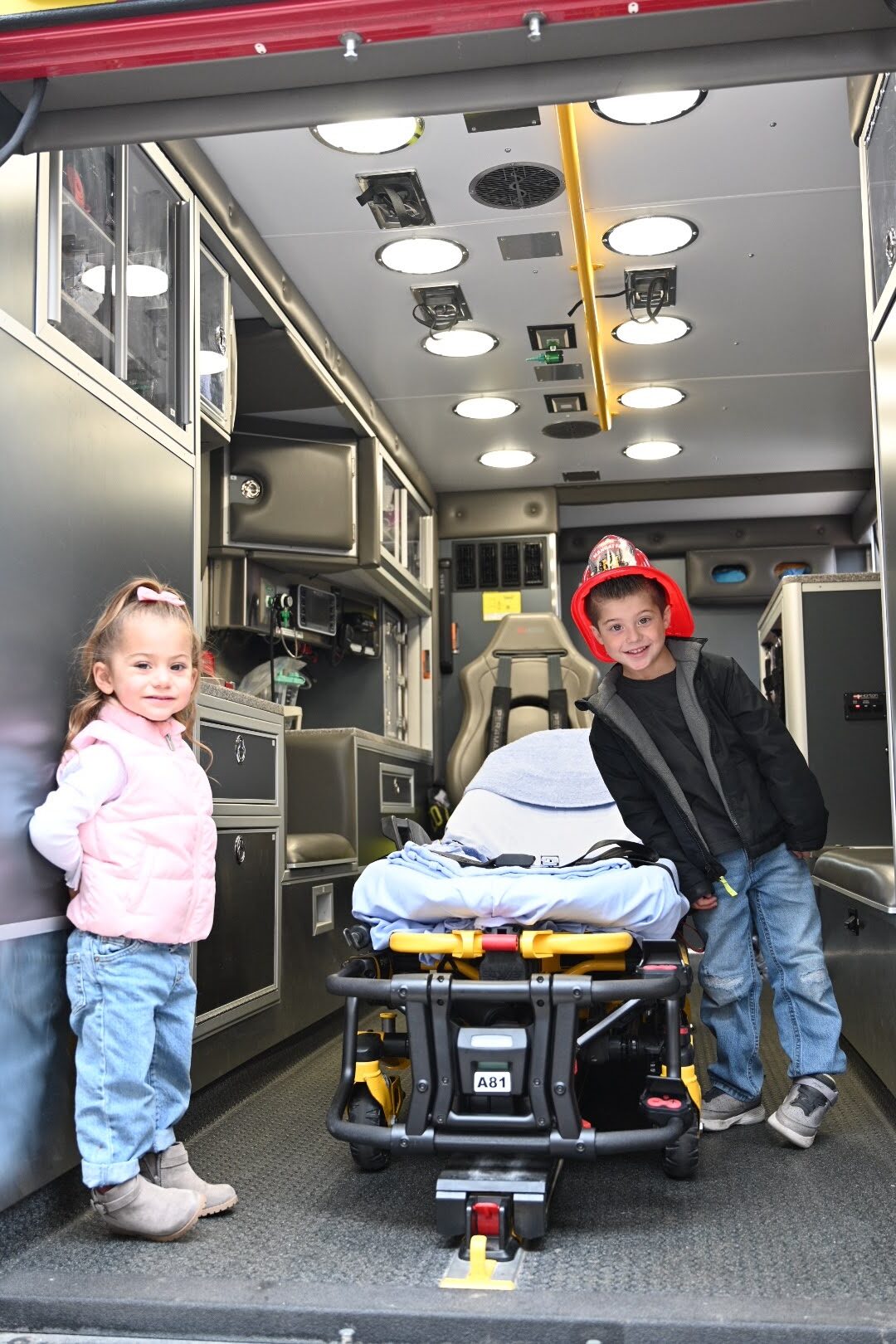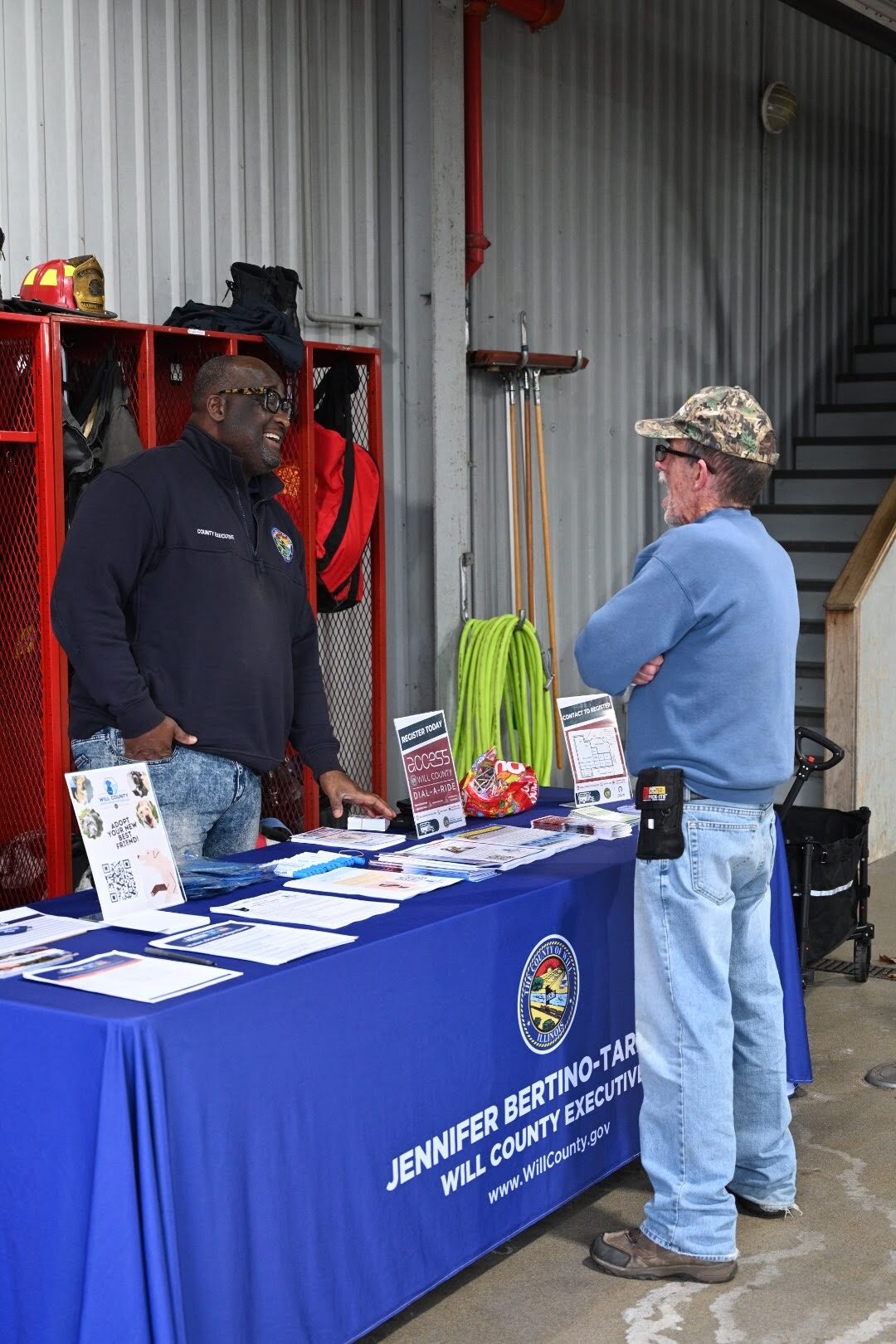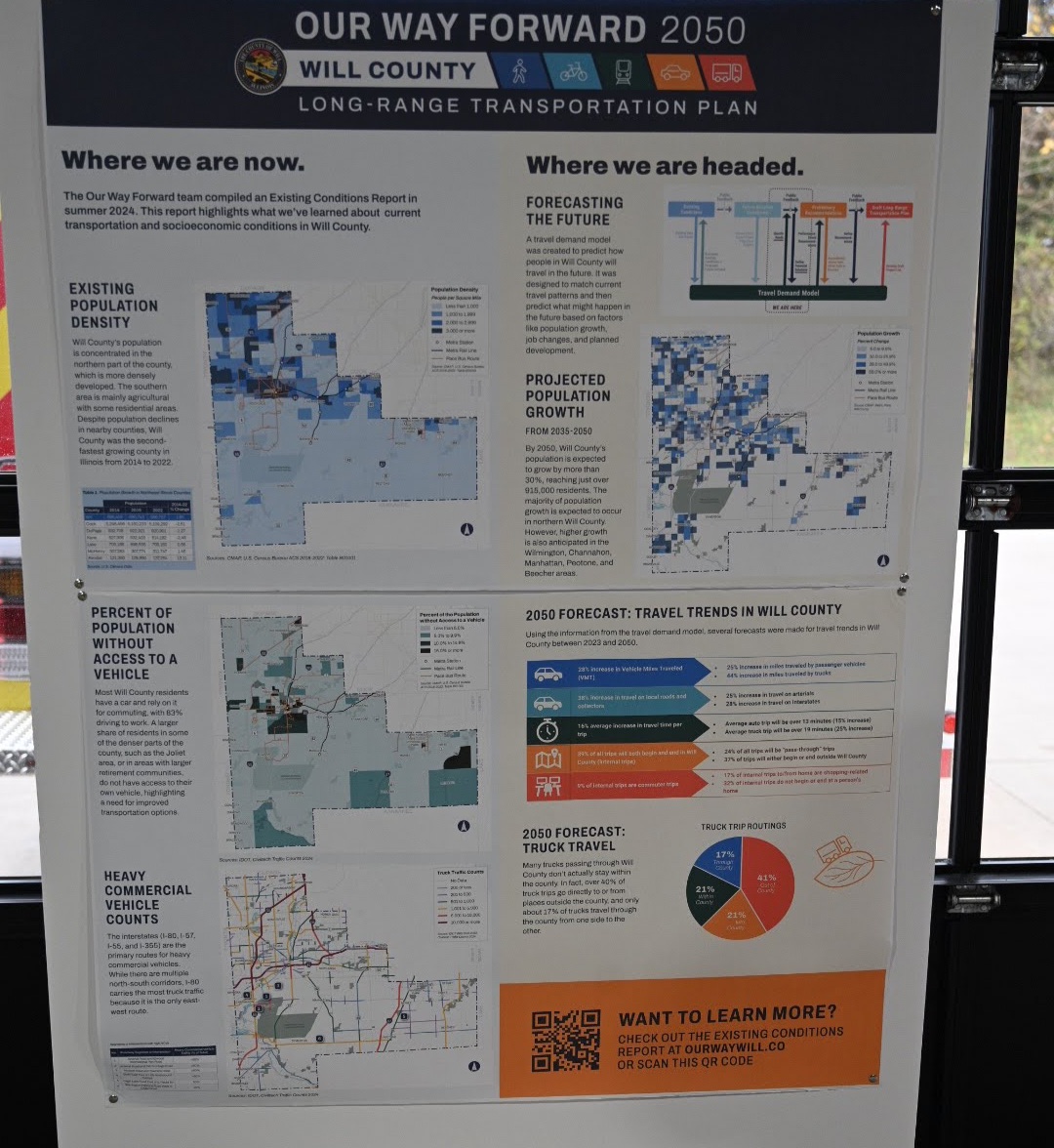Trucks Still on Forefront of Manhattan Residents’ Minds

By Stephanie Irvine
Area residents were treated to a dual community engagement event and informational workshop from Will County for the Long Range “On Our Way Forward to 2050” plan Saturday, Nov. 9.
The 2050 plan is intended to “support mobility throughout the County by guiding transportation policies and investments through 2050 with an equitable and resilient framework.”
Because the plan is still in its early stages and has only just begun creating potential recommendations; the feedback gathered from this public information workshop, as well as the ones held in Beecher on November 8 and in Wilmington on November 10, will help shape those recommendations.
The unique information/touch-a-truck combo event drew about 30 people to the Manhattan Fire Protection District’s Station 81 fire house on Saturday afternoon, according to Community Engagement planners from consultancy group All Together, Tina Figueroa and Grace Li.
Kids could explore fire department apparatus including an engine and ambulance while adults had the opportunity to view maps, discuss transportation needs, and provide their input. The County provided pizza and pie for visitors to enjoy during the open house.
Manhattan resident Tim Sayre, Jr. said he follows transportation plans in the County and had seen the event advertised, which is what prompted him to attend the event with his young son.
He commented that it was nice there were things for his son to do just a few feet away while he was able to review the maps and information provided.
“Our biggest issue is going to be the trucking routes in our town,” Sayre expressed, noting that the impact of potential large developments, and specifically NorthPoint Development, is his biggest worry for the future with regard to County transportation issues.
“When the semis are coming around 52 around the bend, they’re within a couple feet of people on the sidewalk. That’s a big concern. It’s been a big concern for most of our town for a while because, I mean, at any given time of the day, you’re guaranteed to see a semi driving through our town,” Sayre explained.
He recalled instances in which trucks had attempted to turn around and got stuck in ditches and noted that he had seen trucks driving over some of the smaller bridges in town.
CivilTech Engineering’s Brian DeSalle was at the event to field questions from attendees and provide information as they perused large maps of the study areas. DeSalle works with the County specifically to work on travel demand modeling for this project.
“Right now we’re in the process of looking at what’s anticipated to happen in the County by 2050 and recommending things that could improve what we’re seeing,” DeSalle said.
“It’s really a combination of what we know is going on right now and what we anticipate to happen by 2050,” DeSalle said.
The County takes that information, including regional and local data and traffic projections, and considers all of that with what funds are available for improvements. From there, the County implements five-year plans to address what they can.
DeSalle said that the concerns expressed in the northern part of the county are much different than those expressed in the southern county.
“We come out here to talk to everybody to get local concerns to make sure we’re not missing anything, to make sure what we’re getting out of the data forecasts is correct,” DeSalle explained.
He further explained that developments come up and can change what was forecast for the area.
When asked why the County was investing time to look so far ahead into the future when things change so quickly, DeSalle explained that the goal is to have an adaptable plan that change with the demands of the county.
“We’re in the process of having a model built that the County can have going forward, so if something drastic changes in five years, they can change the model,” DeSalle said, noting that the two other ways that the County addresses change in the future is with five and ten year plans.
Figueroa and Li were also present to assist visitors with adding post-it note comments to maps as well as stickering areas that warranted attention.
“I think it’s good—we’ve got to have some plans for the future,” Manhattan resident Tom Lane said.
“The amount of truck traffic is really bad here,” Lane said, explaining further that he would like to see traffic control measures and plans for road maintenance, especially because of the heavy truck traffic in the area. He talked about how much the area has grown.
Will County Executive Jennifer Bertino Tarrant stopped by the event, and Will County Community Engagement Coordinator Garland Mays represented the County at an informational table.
DeSalle explained that the 2050 plan is important to local municipalities because if their concerns end up part of the final plan, municipalities can become eligible for grants to fund those improvements.
“It becomes a way for the local municipalities to get money to fund their project potentially,” DeSalle said.
From Manhattan, Trustee Ron Adamski attended the event and had a lengthy discussion with DeSalle, covering the concerns that he regularly sees and specifically issues with truck traffic.
Manhattan Mayor Mike Adrieansen was unable to attend the event but commented that he and Administrator Jeff Wold have been very engaged with the County with respect to the study and have provided their feedback. Adrieansen also stated that Wold is on the Advisory Committee for the plan.
Residents who missed the informational sessions can learn more about the study online at https://www.ourwaywill.co/ and provide their feedback by visiting: https://www.surveymonkey.com/r/QDT9T7R.
Stephanie Irvine is a freelance reporter.

Siblings Maya, age 2, and Liam, age 5, Leader momentarily stop exploring the ambulance for a picture as their parents and grandfather observe off-camera.

Manhattan resident Tom Lane talks with Will County Community Engagement Coordinator Garland Mays at the Will County Long-Range workshop in Manhattan November 9.
